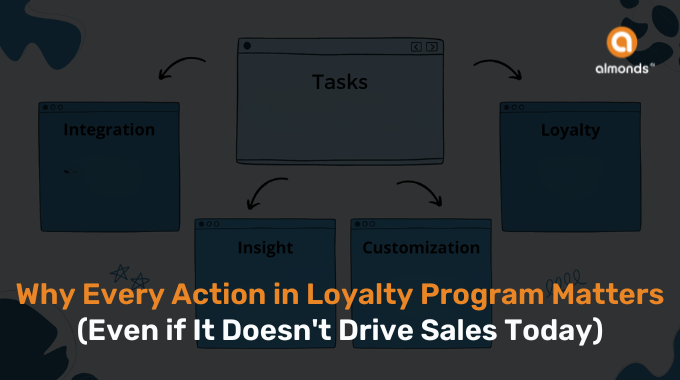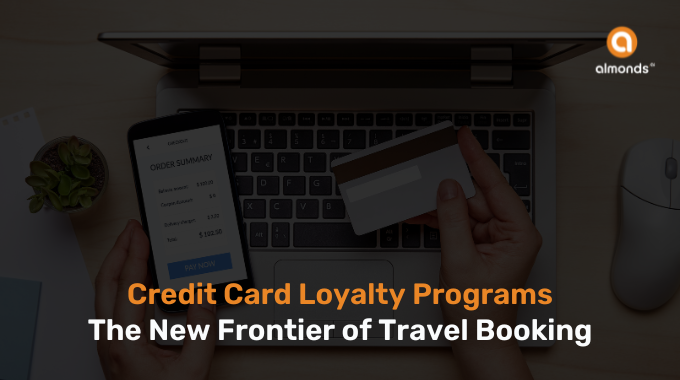Loyalty programs are becoming increasingly crucial for brands to retain their channel partners, customers and build brand loyalty. According to a recent report, “The Global Loyalty Management Solutions” market is expected to grow at a CAGR of 18.5% from 2023 to 2032.
In this blog, we’ll explore the key drivers of this growth, analyze the development data, and provide a growth analysis and forecast for the next decade.
Key Drivers of Growth in the Loyalty Program
There are several key drivers of growth in the loyalty management solutions market.
- Personalized Experience:
Channel partners expect brands to understand their needs and preferences and provide customized offers and rewards tailored to their individual interests. For this, brands need a lot of data and help to analyze it to make it happen.
Loyalty programs help brands meet the demand by providing them with the tools and technologies needed to gather, analyze, and use data to create personalized experiences. It includes targeted marketing campaigns, customized reward programs, and special offers. - Mobile Technology Integrating Loyalty Platform:
With time, more and more customers are using their mobile devices to purchase, access information, and engage with brands. So, customer loyalty programs that are mobile-friendly and easily accessible through apps and websites are becoming increasingly important. - Increasing Competition:
Finally, the increasing competition in many industries is driving brands to invest in loyalty platforms to help them differentiate themselves from their competitors. They can build brand loyalty and stand out in a crowded marketplace by providing their channel partners with personalized experiences and targeted rewards and incentives.
Development Data regarding Loyalty Programs
The market is developing with time, and you must know about the data affecting these developments as a member. So, here are some development and data that are reasons for that:
- The b2b loyalty program platform has been growing steadily over the past few years, and this trend will continue in the coming decade. According to a recent report, “the Global Loyalty Management Solutions” market was valued at USD 4.17 billion in 2020 and is expected to grow to USD 15.72 billion by 2032.
- Cloud Computing in Loyalty Programs:
One of the key drivers of this growth is the increasing adoption of cloud-based loyalty programs. Cloud-based solutions are becoming increasingly popular because they offer brands greater flexibility, scalability, and cost-effectiveness than traditional on-premises solutions.
In addition, the Asia Pacific region is expected to be the fastest-growing market for b2b loyalty program platforms over the next decade. It is due to several factors, including the rapidly growing e-commerce industry in the region and the increasing adoption of mobile technologies.
Growth Analysis and Forecast of the Loyalty Programs
- Financial forecast
The customer loyalty program market will continue its strong growth trajectory over the next decade. As the report mentioned, the market will grow at a CAGR of 18.5% in the next decade.
- New Technology Adaption
One of the key factors driving the growth is the continuous adoption of AI and machine learning technologies in loyalty programs. These technologies are helping businesses gather and analyze data more effectively. It is used to create more personalized experiences and targeted rewards and incentives.
The increasing adoption of blockchain technology in loyalty platforms is also expected to drive growth in the market. Blockchain offers several benefits, including increased security, transparency, and accountability. It is increasingly used to power loyalty programs and other channel partner engagement initiatives. - Loyalty Program Integration from Other Market Solutions
Another important trend is the increasing integration of rewards programs with other marketing and channel partner engagement technologies. For example, businesses are now integrating reward programs with their CRM systems, marketing automation platforms, and customer service tools to create a seamless and cohesive customer experience across all touchpoints.
Conclusion
The b2b loyalty program platform market is expected to experience substantial growth over the next decade, driven by increasing demand for personalized experiences, rising technologies, and excessive competition. By investing in loyalty platforms, brands can leverage AI, machine learning, blockchain, and other cutting-edge technologies.
Brands can create more engaging and personalized experiences for their channel partners and build long-lasting brand loyalty. As the market evolves, brands that stay on top of the latest trends and technologies will be well-positioned to succeed and thrive in an increasingly competitive landscape.
However, it’s important for businesses to choose the right loyalty platform for their needs. It cannot be easy to know which solutions will deliver the best results. When selecting a loyalty platform, some important factors include scalability, ease of use, flexibility, security, and the ability to integrate with other marketing and customer engagement technologies.
Ultimately, the success of a loyalty program depends on its ability to deliver personalized experiences and rewards that truly resonate with its partners. By leveraging the latest technologies and best practices, brands can build stronger relationships, drive repeat business, and achieve long-term growth and success.







